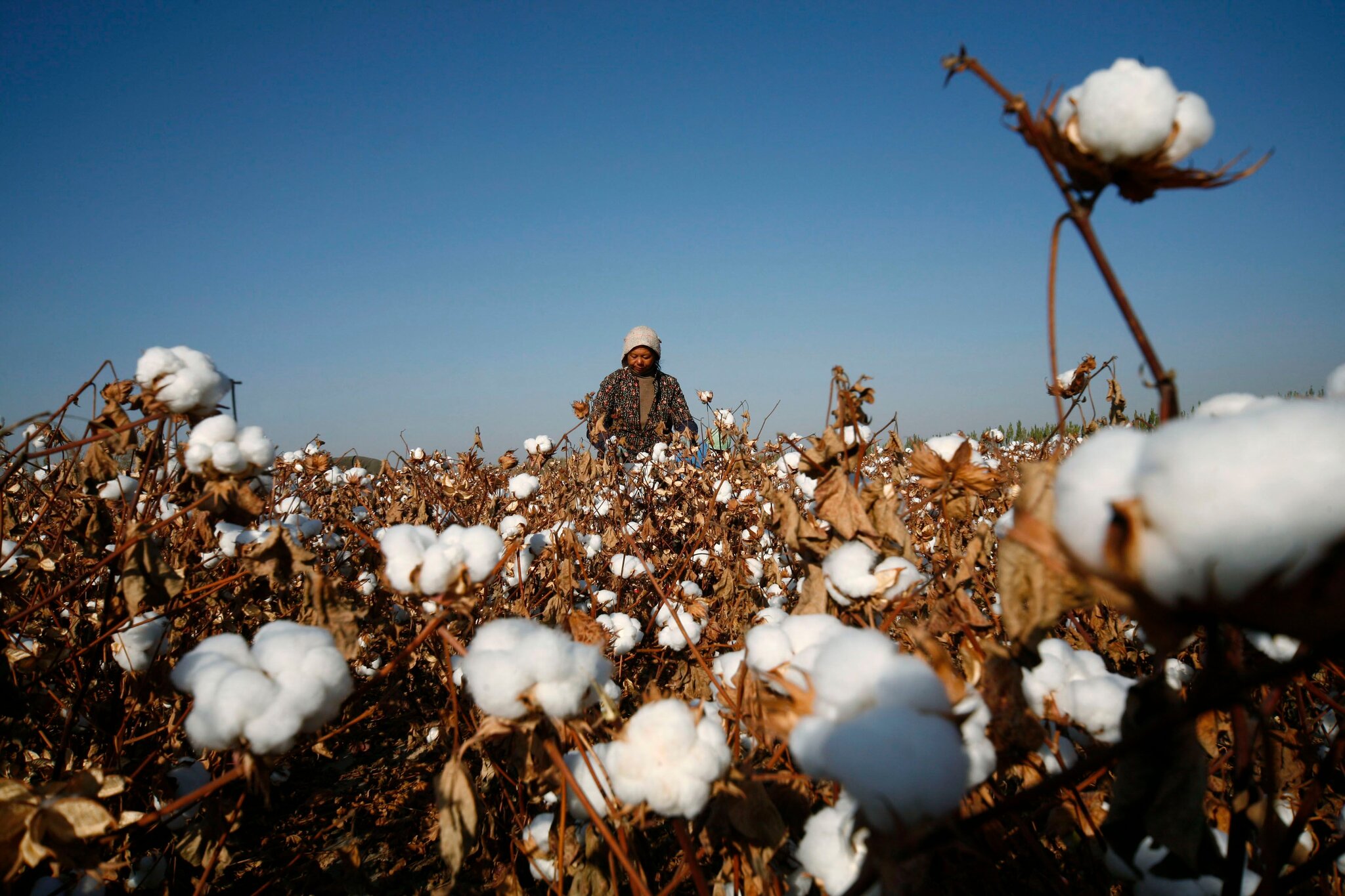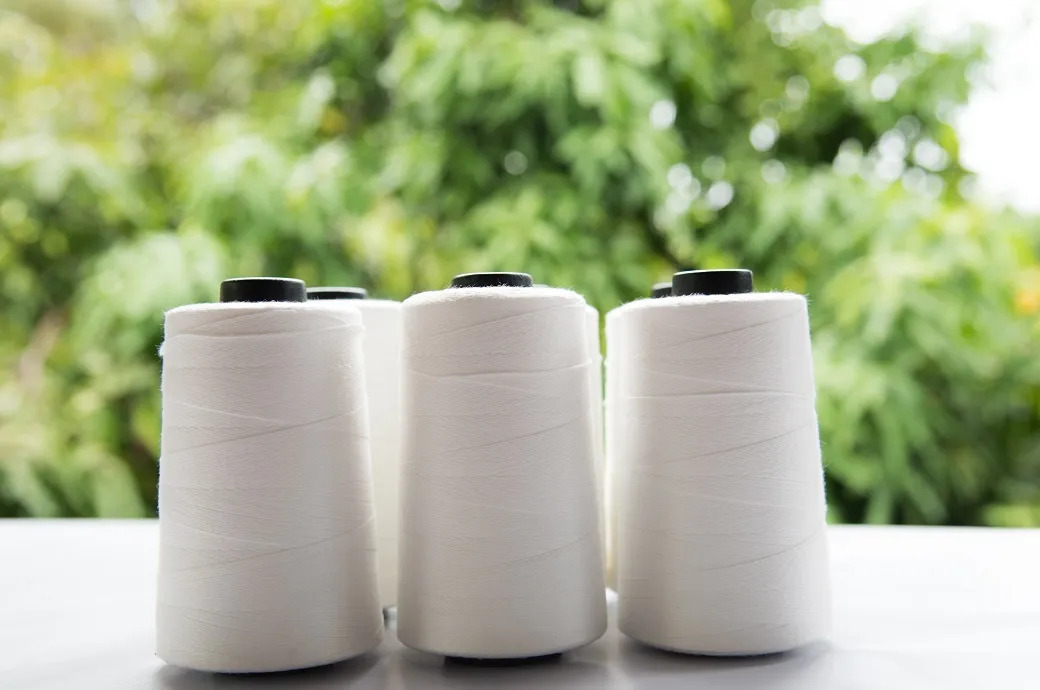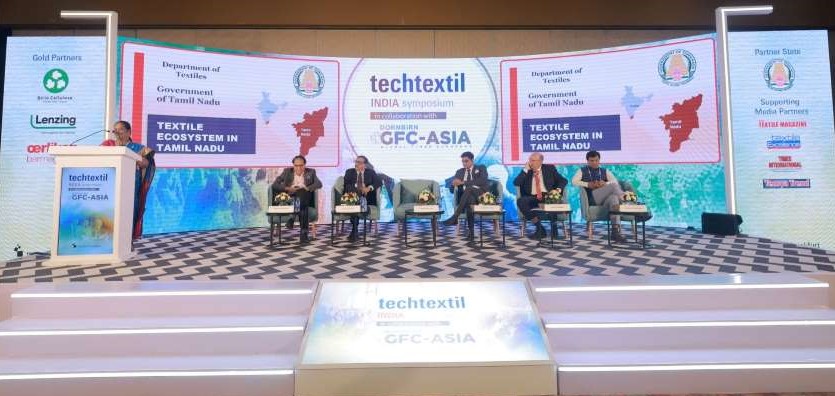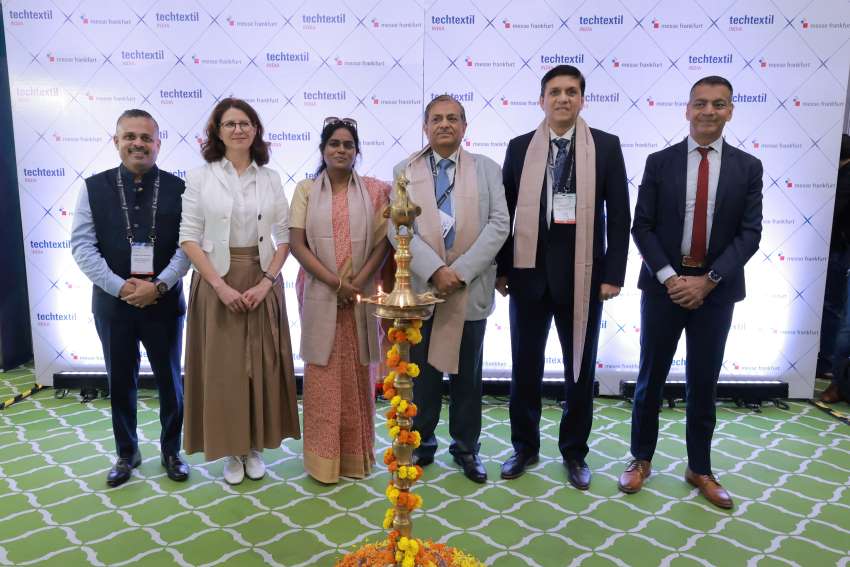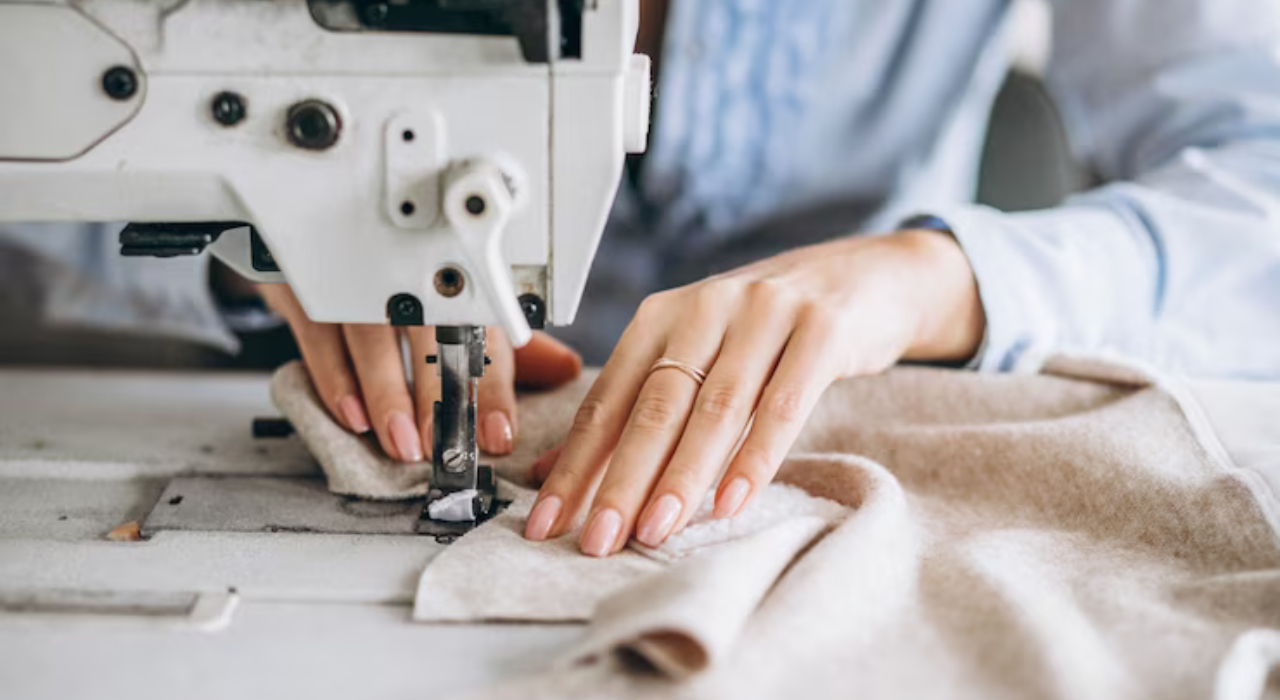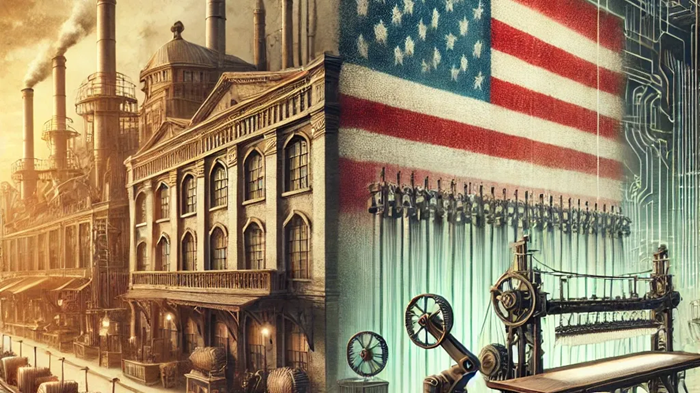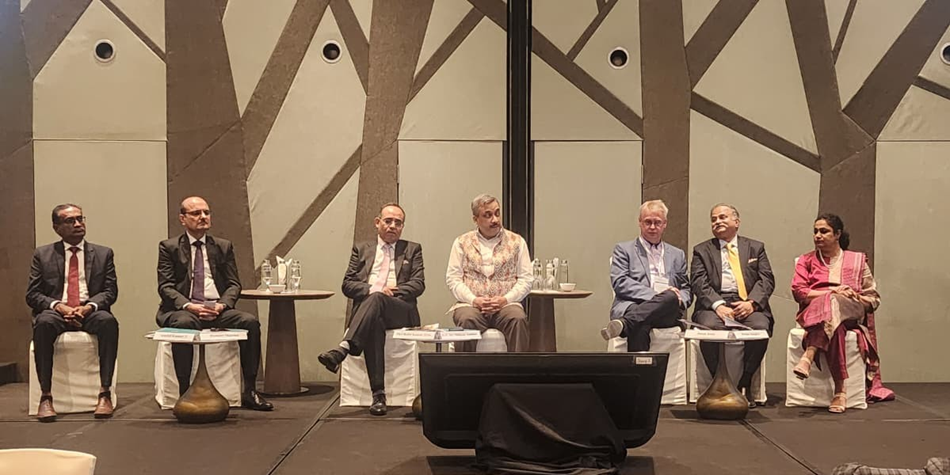FW
Cotton Incorporated, the research and promotion company for cotton has joined hands with Archroma to present what they believe is the first ever dye derived from cotton plant residues. It began when Cotton Incorporated had approached Archroma and challenged it to develop a dye option that may represent the first opportunity in modern textile history to create and colour a fabric using a single plant source. Archroma has come out with EarthColors, an innovative method of creating dyes in warm, ternary shades from nature. In fact, the EarthColors application on cotton by-products marks the first time the cotton plant has been used to actually dye cotton fabrics.
The patented technology addresses two key concerns of the textile industry: sustainability and traceability. These sulphur-based dyes are designed for use on cellulosic fibers such as cotton. While most dyes in the textile industry are synthetic, using petrochemicals (oil) as a base, EarthColors is a biosynthetic alternative that makes use of natural waste from the agricultural or herbal industry.
There is an ample supply of cotton biomass. The global volume of cotton harvesting and ginning by-products that includes burs, stems, immature bolls, lint, sticks, and leaves can be as much as three million tons per year. One 480 lb. bale of cotton, for example, can produce 150-200 lbs. of usable byproducts.
Each batch of EarthColors dye offers a high level of traceability in the form of a hangtag with a Near Field Communication chip. The data on the chip, which can be accessed by Archroma customers and even consumers through a smart phone, explains the manufacturing process of the dye and where the natural materials were sourced. Similarly, every bale of cotton grown in the US receives a bale identification tag. The tag allows cotton businesses to trace the journey of the bale as far back as the facility where the cotton was ginned.
The apparel industry in Britain is worried about the impact of Brexit. For now retail sales continue to be strong and consumer spending at home is high. British brands continue to perform well in export markets and London is still home to the best talent in the global fashion industry.
Also retail sales suffered only a slight dip in August, after a strong July. The weaker pound since the referendum boosted sales of luxury items to foreign tourists by making them cheaper.
But high street retailers feel prices may rise as the weak currency makes it more expensive to import goods from overseas suppliers. Many fashion designers wanted to stay on in the European Union, and there are fears about the impact of exiting on exports, costs and Britain’s ability to attract design talent. The EU accounted for 70 per cent of British textiles and apparel exports in 2014.
From home grown start-ups to international fashion houses, every business in the industry has to play a major role in ensuring Britain makes a success of Brexit. The country has to take advantages of the opportunities that leaving the EU gives it and plays to its strengths as a great trading nation.
This year, textile trade show Milano Unica was held at Fiera Milano Rho, the located on the outskirts of Milan from September 6 to 8. The new location marks a return of sorts for the show which moved out only to be at the centrally located Fieramilano¬city convention center. Then, it moved for one season to Rho in 2006 before returning to Fieramilanocity until last February. Both exhibitors and attendees were pleased with the show’s new location.
The show featured two international pavilions, the Japan Observatory section and the Korea Observatory section. This season, Milano Unica partnered with Fiera di Vicenza to bring Origin Passion and Beliefs, a three-day event featuring international designers and Italian manufacturing. In addition to Italian fabric and trim resources, the show also included other upscale European mills such as French couture fabrics maker Goutarel.
Jewelry designer Antoanetta Ivanova was the only Los Angeles exhibitor at the named trade show where she displayed her Antoanetta fine jewelry collection in Origin Passion and Beliefs, a new section at the show devoted to connecting international designers with Italian manufacturing facilities. This was Ivanova’s first time at Milano Unica but her second at Origin which was earlier held in Vicenza. The show comprised of several sections, the important ones being Moda In and Moda In Accessories for men’s and women’s fabrics and trim and the Shirt Avenue for shirting resources for men and women. Then there was IdeaBiella for upscale menswear mills from the area around Biella, a city in Italy’s Piedmont region.
Milano Unica was founded in 2005 when several longstanding Italian trade shows joined forces to show in a central location. Since its launch in Milan 11 years ago, Milano Unica has grown to include editions in Shanghai and New York. Besides, it also has a pre-collection show called Prima MU which is being been held in Milan for the last two years in the month of July.
"Patagonia Inc, the US-based sustainable outdoor clothing brand has revamped its supply chain in order to maintain its ethical standrads. The brand’s core philosophy was in conflict with its strategy to chase the mass market appeal. The $800 million outdoor apparel empire has earned a loyal customer base for offering heavy-duty jackets, backpacks and long underwear at premium prices, with vows to “build the best product” and “cause no unnecessary harm."

Patagonia Inc, the US-based sustainable outdoor clothing brand has revamped its supply chain in order to maintain its ethical standrads. The brand’s core philosophy was in conflict with its strategy to chase the mass market appeal. The $800 million outdoor apparel empire has earned a loyal customer base for offering heavy-duty jackets, backpacks and long underwear at premium prices, with vows to “build the best product” and “cause no unnecessary harm.”
Struggles with ethical issues in production line
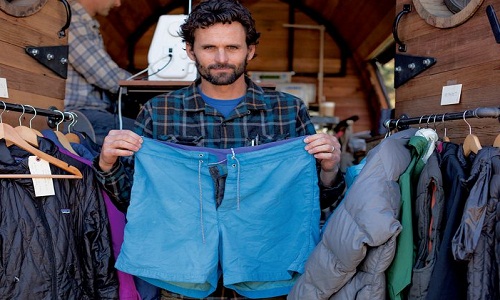
Since 2008, Patagonia has tripled its profits and the company maintains a reputation for transparency and socially responsible behavior with its customers. But it is also facing challenges to retain strict code of ethics while chasing mass-market dream. In fact in 2010, German animal-rights group Four Paws claimed to have found evidence that farms supplying down feathers to Patagonia were force-feeding geese to fatten their livers for foie gras. In 2012, Patagonia discovered brokers were charging migrant workers thousands of dollars for job placement at the company’s factories in Taiwan—a practice human-rights groups say is a form of slavery. Adding to it, recently People for the Ethical Treatment of Animals posted a video online depicting grisly abuse of sheep at South American ranches that sold wool to Patagonia.
Each accusation caught the brand off guard as it has been promoting itself for its high ethical standards . However, corrective measures were immediately taken. While in Taiwan the brand worked with suppliers to repay workers, in other cases it cut ties with suppliers and rebuilt supply chains from scratch, even as it pursued global expansion and launched new product lines.
Companies often run into “a huge disconnect—where (marketing teams) are ready to tell the story before operations and supply-chain teams are ready and able to confirm it,” said Alexis Bateman, a researcher at MIT’s Center for Transportation and Logistics. “It’s possible they know where the farm is, even who the farmer is, but not what’s happening 365 days a year. Clarifying the brand’s struggles Yvon Chouinard says “When you’re trying to clean up your supply chain, you can’t believe how deep you have to go,”
With plans for increasing its market globally Patagonia has added retail partners across five continents, invested in e-commerce and launched new product lines. Along with its journey Patagonia has been struggling with serious issues related to its product supply chain time and again. While on one hand the brand was sorting out issues in Taiwan, PETA was planning a campaign against the company’s wool supplier. Within 24 hours, they learned, PETA would be posting a video to its website showing rough treatment and mutilation of sheep during shearing.
The footage was partly shot on farms within the Ovis 21 network, a collective of more than 160 ranches in South America, PETA and Ovis said. Ovis 21 was a supplier for all of Patagonia’s wool products, including sweaters, hats and socks. Within days Patagonia announced it would stop buying wool from Ovis 21. The retailer had to scale back plans to boost production of its newest wool items, including a line of long underwear the company spent three years developing and had launched just a month earlier.
Instant corrective measure to retain USP
“Although we weren’t specifically auditing for animal welfare, these were just not good practices,” Ricardo Fenton, co-founder of the farm network said. Ovis is working to fix the issues more broadly across its network through its continued efforts with the nonprofit Textile Exchange’s International Working Group, which includes Patagonia, to develop an industrywide “Responsible Wool Standard.”
Meanwhile Patagonia assembled an in-house task force to rewrite the company’s criteria for wool growers and find new suppliers. For the past year, Marcario has met regularly with the wool team and personally approved standards for castration, shearing and lamb birthing. Task-force members were on hand for shearing and the birth of lambs at several farms. In July, Patagonia announced an agreement with two ranches in Oregon and Utah, which will grow wool for the retailer’s socks. Patagonia has identified another supplier for the rest of its wool products, but has yet to sign a contract. While Patagonia is still seen as a leader in how it addresses social and environmental issues, the company and the industry as a whole should be more proactive about rooting out problems, say experts.
The Obama administration recently decided to file a WTO trade enforcement action against rice, wheat and corn price support programs of the People’s Republic of China. And, supporting the government in its move, the US cotton industry has applauded the decision of the Obama administration.
At a press conference to announce the trade enforcement action against Chinese rice, wheat and corn support on September 13, US officials said China’s use of market price support for the three key crops has been in excess of its commitment of no more than 8.5 per cent of the market value under World Trade Organization rules. But it is said China’s market price support for these products is estimated to be nearly $100 billion in excess of the levels China committed to during its accession to the WTO.
Industry leaders are of the view that a similar action should be taken against China’s excessive support programs for cotton farmers which they argue have contributed to a one-third reduction in US cotton acreage since 2011. Members of the House and Senate Agriculture committees and other members of Congress also participated in the briefing.
Besides, China’s synthetic fiber subsidies that are the reason of causing even more stress in the world fiber markets than its cotton support programs, according to Gary Adams, president and CEO of the National Cotton Council (NCC) of America. Adams noted that cotton is the only agricultural commodity with an explicit mechanism that allows for the multilateral evaluation of domestic support, export subsidies and market access. This came up through the semi-annual dedicated discussions established by the WTO in December 2013.
Encouraged by successful fund-raising by women’s wear brand ‘W’, several mid-sized apparel makers have initiated talks with private equity firms to raise funds for their business. One such company is Esjay International Pvt. Ltd and the other is Soch Apparels Pvt. Ltd. The former has hired bankers to raise funds in the range of Rs 50-100 crore, it is heard. Their previous attempts to raise funds were unsuccessful because of differences on valuations.
The said company is in discussions with private equity investors to raise about Rs 50 crore by diluting about 15-20 per cent in the company. The Sunil Jhangiani-led Esjay launched the Chemistry brand way back in 2004. Jhangiani, whose family owns Esjay, failed to raise money in 2013 because of a disagreement with investors over the firm’s valuation.
Bengaluru-based Soch Apparels Pvt. Ltd, the owner of women’s wear brand Soch, is also in plans to raise funds from investors. The Boutique Investment Bank is helping Soch find investors.
The third company is Dixcy Textiles Pvt. Ltd., the owner of the Dixcy Scott underwear brand, is also planning to raise about Rs300 crore from private equity investors. Currently, it is in the process of hiring investment bank Avendus Capital Pvt. Ltd to help it to find investors.
The size of the Indian women’s apparel market will reach $20 billion in 2020, from $13 billion last year growing at an annual average pace of 10 per cent, according to estimates by Avendus Capital. The branded portion of this market that was approximately 17 per cent in 2015 is expected to exceed 38 per cent n the next 10 years.
Readymade garment factories in Bangladesh continue to be under strict punitive measures like business cut by western retailers and brands due to their non-compliance of workplace safety requirements. So far, more than 228 global apparel buyers, retailers and brands have either suspended or terminated their business relations with around 150 garment factories through their two platforms-Accord and Alliance. While Accord is the group of more than 200 EU based buyers, retailers and trade unions, Alliance represents some 28 apparel buyers and companies based in North America.
Both Accord and Alliance inspected the structural, electrical and fire safety in some 2,000 factories from which their members buy. Each factory is then provided with a CAP designed to help it address safety issues and achieve compliance with their respective safety standards. Recently Accord informed the Bangladesh Garment Manufacturers and Exporters Association (BGMEA) that more than 550 factories are not making the required progress in remedial works. Accord has warned of stalling business relations with those units unless they make required remedial works for ensuring workplace safety and also requested BGMEA to take necessary measures to avert the final stage of business termination, it is informed.
BGMEA vice president Mahmud Hasan Khan says there are few factories that want to rejoin the groups. But many of them currently do not work for the Accord or Alliance signatory members. A good number of factories could not do the remedial works as their units are located in a rented or shared building. Another reason is that they did not get the required financial support to carry out the flaw fixing works.
In a latest setback for the supplier, two class action lawsuits have been filed against Welspun India Ltd. The lawsuits allege the company fraudulently labeled its bed sheets and towels as premium Egyptian cotton while the contents were not. It may be recalled that the supplier came into the bad books of recently.
Welspun committed a ‘widespread fraud’ in which ‘consumers who have purchased Welspun bed linens have overpaid for an inferior product,’ a plaintiff alleged in an August 29 lawsuit filed in a New York federal court. The suit was filed by Hagens Berman Sobol Shapiro LLP, a consumer-rights action law firm.
However, a Welspun spokesperson declined to comment on the lawsuits. Welspun's stock fell 2.2 per cent to Rs 56.60 in Mumbai yesterday.
The controversy over Mumbai-based Welspun has been getting large since Target said it's stopping business with the vendor after discovering sheets and pillowcases that were made with cheaper fibers were mislabeled as Egyptian cotton for two years.
Sweden plans to strengthen bilateral trade with India. Trade between the two countries is somewhat skewed at the moment with India largely importing raw material from Sweden and exporting value-added products. India is Sweden’s 19th largest export market and the third largest trade partner after China and Japan in Asia. The main Swedish exports to India are pharmaceuticals, paper and pulp products, chemicals, engineering products and telecom equipment. The main items of Indian exports are chemical products, food products, and semi manufactured and manufactured goods.
India wants to increase food exports to Sweden. And Sweden is ready to provide the technology and know-how for improving quality to international standards. Sweden is keen on exploring the possibility of a joint project in smart textiles using viscose staple fiber, cellulosic fiber and pulp as an alternative to cotton.
Most major Swedish companies entered India decades ago but in recent years their investments have increased and Indian companies have also begun to invest in Sweden. There is significant potential for enhancing bilateral collaboration in key areas like green technologies, renewable energy, smart infrastructure, healthcare and defence. Many Swedish companies such as Ericsson, Swedish Match, SKF and ABB came to India even before it became independent.
In the last several years, the strategic importance of Bangladesh textile sector has emerged strong. The country is a key gateway for global supply chains and production networks with figures proving it to be the world’s second largest manufacturer of denim products. Bangladesh has in all 26 denim making factories with a total investment of over $834 million and a monthly production of 30 million yards per month, seems to be an essential ally for the growing international demand for denim fabric and for skilled yet competitive workforces.
Knowing this well that this productive effort in Bangladesh needs to be supported by a strong drive towards cultural improvement, the Bangladesh Denim Expo organization is pushing standards ahead, year after year. For the upcoming Bangladesh Denim Expo show to be held on November 8 and 9, the Expo will organise a number of workshops and seminars in Dhaka with the aim to develop the skills of local denim designers, denim developers and denim enthusiasts and to promote the Bangladeshi denim industry.
Both workshops and seminars will cover a variety of topics including denim style and trend direction and denim fabric trends. According to Md. Mostafiz Uddin, CEO of Bangladesh Denim Expo, the purpose of organizing these workshops and seminars is to achieve this objective. He also said that one of the long term objectives of Bangladesh Denim Expo has always been to nurture local talents and help educate them. Two months prior to the 5th edition of the Expo, a similar number of seminars are to be held. Participants will be exhibitors and visitors of to the Expo and local denim professionals.

